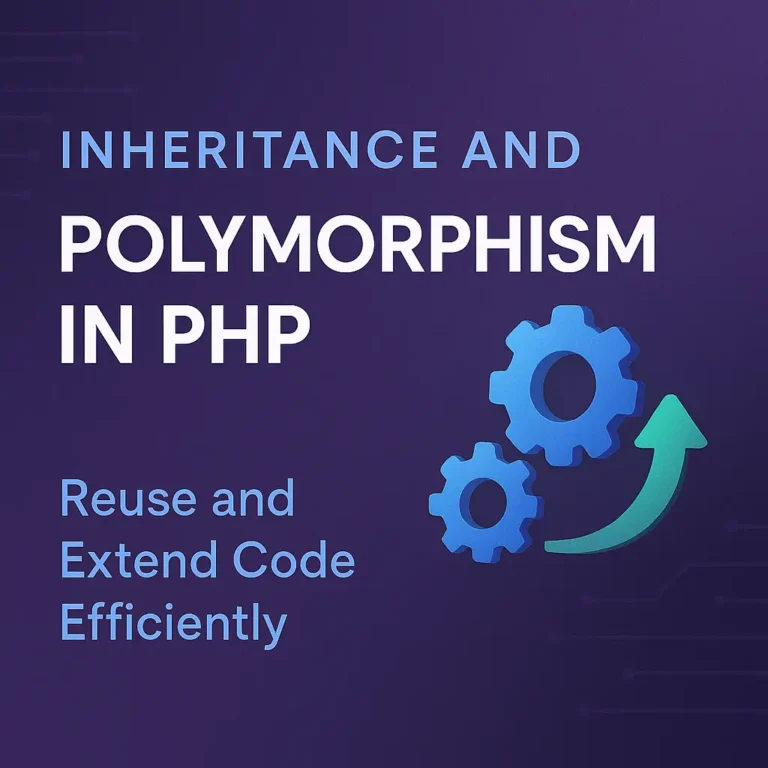Understanding these methods is essential for managing resources efficiently and ensuring the proper initialization of objects. This article delves into the details of constructors and destructors in PHP, providing code examples to illustrate their usage.
Constructor Methods
What is a Constructor?
A constructor is a special method within a class that is automatically executed when an object of the class is created. Constructors are primarily used to initialize the properties of the object or to perform any setup required for the object. In PHP, the constructor method is defined using the __construct keyword.
Defining a Constructor
A constructor method is defined inside a class with the name __construct. It can take parameters that allow you to pass values during object instantiation. Here is a basic example of defining and using a constructor in PHP:
<?php
class Car {
public $make;
public $model;
public $year;
// Constructor method
public function __construct($make, $model, $year) {
$this->make = $make;
$this->model = $model;
$this->year = $year;
}
public function displayInfo() {
return "This car is a {$this->year} {$this->make} {$this->model}.";
}
}
$car = new Car("Toyota", "Corolla", 2020);
echo $car->displayInfo(); // Outputs: This car is a 2020 Toyota Corolla.
?>
In this example, the Car class includes a constructor that initializes the make, model, and year properties when a new Car object is created. The displayInfo method then uses these properties to display information about the car.
Using Default Values in Constructors
Constructors can also have default parameter values, which makes parameters optional when creating an object. Here’s an example:
<?php
class Book {
public $title;
public $author;
public $year;
// Constructor method with default values
public function __construct($title = "Unknown Title", $author = "Unknown Author", $year = 0) {
$this->title = $title;
$this->author = $author;
$this->year = $year;
}
public function getDetails() {
return "{$this->title} by {$this->author}, published in {$this->year}.";
}
}
$book1 = new Book("1984", "George Orwell", 1949);
$book2 = new Book(); // Uses default values
echo $book1->getDetails(); // Outputs: 1984 by George Orwell, published in 1949.
echo $book2->getDetails(); // Outputs: Unknown Title by Unknown Author, published in 0.
?>
In this example, the Book class constructor provides default values for its parameters, allowing for flexible object creation.
Destructor Methods
What is a Destructor?
A destructor is a special method that is automatically called when an object is destroyed or when the script ends. Destructors are used to perform cleanup tasks, such as releasing resources or closing file handles. In PHP, the destructor method is defined using the __destruct keyword.
Defining a Destructor
A destructor method is defined inside a class with the name __destruct. It does not take any parameters and is automatically called at the end of the script execution or when the object is explicitly unset.
Here’s an example of defining and using a destructor in PHP:
<?php
class Logger {
private $fileHandle;
// Constructor method
public function __construct($fileName) {
$this->fileHandle = fopen($fileName, 'a');
}
// Destructor method
public function __destruct() {
fclose($this->fileHandle);
echo "File handle closed.";
}
public function log($message) {
fwrite($this->fileHandle, $message . PHP_EOL);
}
}
$logger = new Logger('log.txt');
$logger->log("This is a log message.");
// Destructor is called automatically at the end of the script or when $logger is unset
?>
In this example, the Logger class opens a file handle in the constructor and writes log messages to the file using the log method. The destructor method ensures that the file handle is properly closed when the object is destroyed.
Explicitly Unsetting an Object
You can explicitly destroy an object using the unset function, which will trigger the destructor method immediately. Here’s how you can do that:
<?php
class TemporaryFile {
private $filePath;
public function __construct($filePath) {
$this->filePath = $filePath;
touch($filePath); // Create an empty file
}
public function __destruct() {
unlink($this->filePath); // Delete the file
echo "Temporary file deleted.";
}
}
$tempFile = new TemporaryFile('temp.txt');
// Do something with the temporary file
unset($tempFile); // Destructor is called, file is deleted
?>
In this example, the TemporaryFile class creates a temporary file in the constructor and deletes it in the destructor. By calling unset($tempFile), the destructor is immediately invoked, and the temporary file is deleted.
Best Practices for Constructors and Destructors
Constructors
Initialize Essential Properties: Ensure that all essential properties are initialized in the constructor.
Avoid Complex Logic: Keep the constructor logic simple to avoid potential issues during object creation.
Use Dependency Injection: Pass dependencies (other objects or services) into the constructor to promote loose coupling.
Destructors
Resource Management: Use destructors to release resources such as file handles, database connections, or sockets.
Avoid Throwing Exceptions: Destructors should not throw exceptions as they are called during the object destruction phase, which might lead to unexpected behavior.
Minimal Logic: Keep destructor logic minimal to ensure smooth object cleanup.
Conclusion
Constructors and destructors are integral parts of PHP’s object-oriented capabilities. Constructors enable the initialization of objects with necessary values, ensuring that objects start in a valid state. Destructors provide a way to clean up resources and perform necessary final actions when an object’s lifecycle ends. By effectively using constructors and destructors, PHP developers can write more robust, maintainable, and efficient code. Understanding and implementing these methods correctly is crucial for resource management and ensuring the proper functioning of applications.






